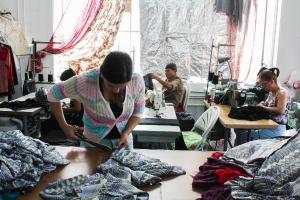Ten Years On From Rana Plaza, How Much Have Conditions in Bangladesh’s Garment Industry Improved?
Equal Times
 In collaboration with the Garment Worker Center and UCLA Occupational Safety and Health (UCLA LOSH), the UCLA Labor Center just released Dirty Threads, Dangerous Factories: Health and Safety in Los Angeles’ Fashion Industry. The study finds that fast fashion, an approach that moves garments from design to shelf at an accelerated pace, leads to dangerous working conditions for garment workers.
In collaboration with the Garment Worker Center and UCLA Occupational Safety and Health (UCLA LOSH), the UCLA Labor Center just released Dirty Threads, Dangerous Factories: Health and Safety in Los Angeles’ Fashion Industry. The study finds that fast fashion, an approach that moves garments from design to shelf at an accelerated pace, leads to dangerous working conditions for garment workers.
Spread the word